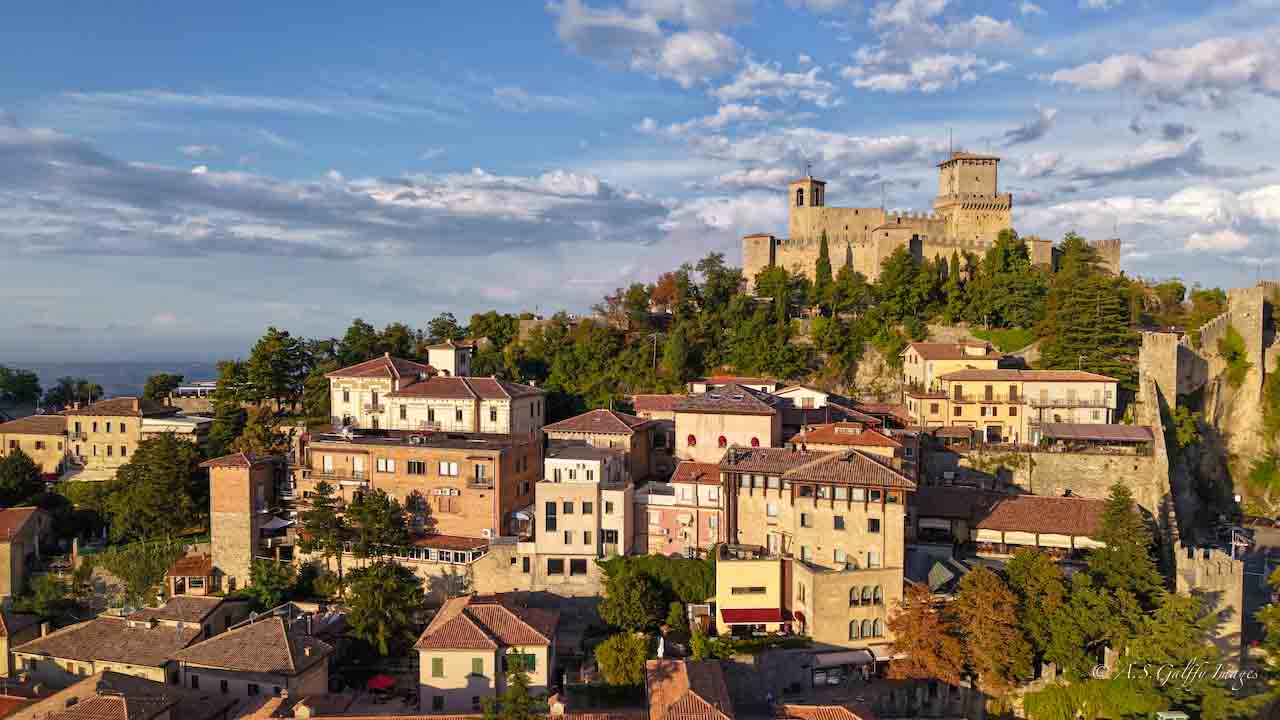
Not many people have heard about the Republic of San Marino, but believe me, this tiny state of only 61 km2 (23.5 square miles) is truly worth visiting! Being surrounded by Italy on all sides, San Marino is often confused with just another Italian city. Nonetheless, this small country has stubbornly clung to its independence for over 1700 years. San Marino may be small and often disregarded by tourists, but it has quite a few interesting things to see and do, so be sure you make it part of your European itinerary.
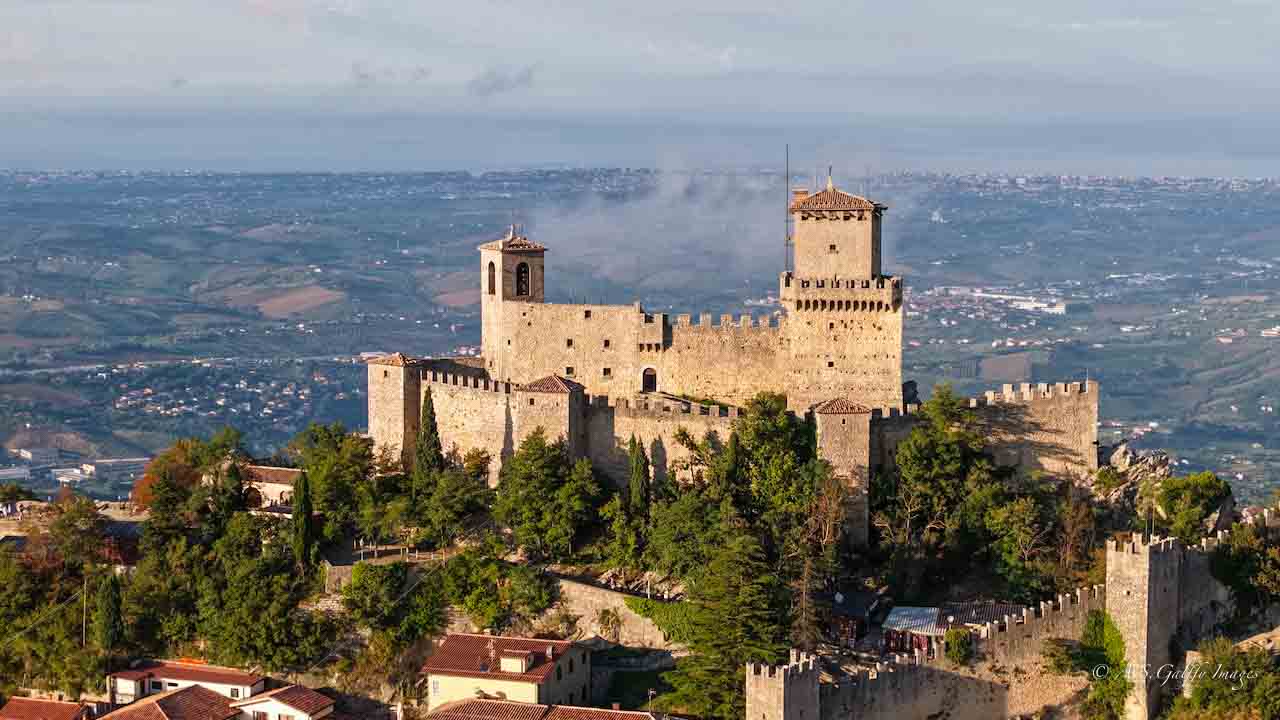 Guaita Fortress seen from above
Guaita Fortress seen from above
A Brief History of San Marino
The Republic of San Marino claims to have been founded back in 301 A.D., when a stonemason named Marinus fled religious persecution to establish a community on Mount Titano. This makes it the world’s oldest continuous republic and a living testament to ancient republican ideals and democratic self-rule. A legacy that has endured for over 1,700 years!
The factors that contributed to it’s long-enduring independence are however multiple. On one hand, the country’s geographic location atop Monte Titano in Italy’s Apennine Mountains made it difficult to conquer.
 View of Guaita Fortress in San Marino historic center
View of Guaita Fortress in San Marino historic center
Over the centuries, the republic maintained a policy of neutrality, especially during major conflicts and unification movements, in order to avoid becoming a target.
In 1797, Napoleon protected San Marino’s independence and even offered to expand its territory, a gesture rooted in a friendship cultivated by one of its regents.
But the one that saved San Marino from being incorporated into the new Italian state was Giuseppe Garibaldi. During the 19th-century Italian unification, Garibaldi and his revolutionaries found refuge here, so in gratitude he helped ensure San Marino’s independence.
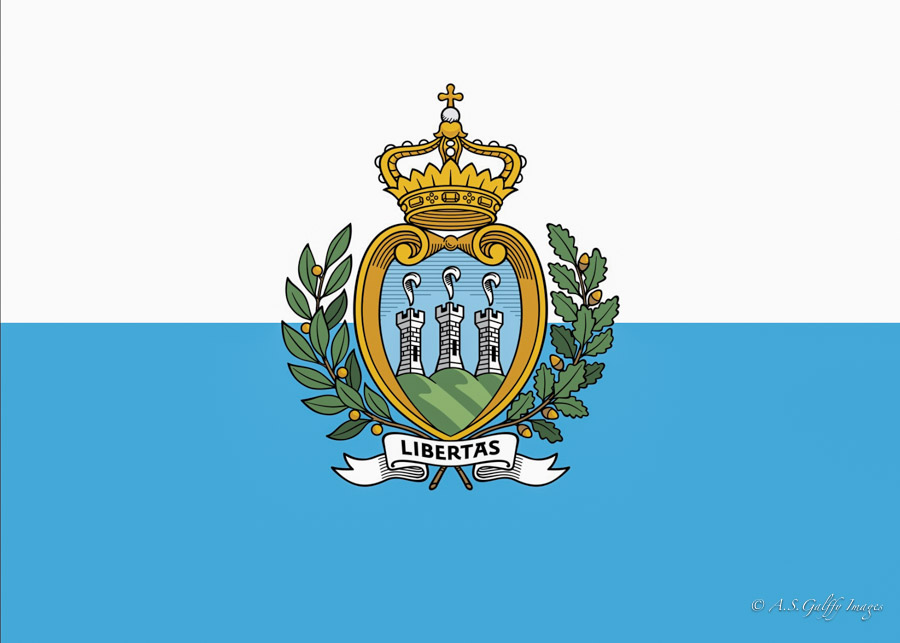 San Marino Flag
San Marino Flag
Top Things to Do in San Marino
San Marino is a small place, so you don’t need a lot of time to explore its attractions. However, if you have the time to visit it you’ll discover there are quite a few unique things to visit here.
Climb the Three Towers
Definitely the most important attraction in San Marino are the Three Towers – Guaita, Cesta and Montale – which are located at the very top of Monte Titano. The towers are a symbol of San Marino and thus also appear on the country’s flag as well as the Coat of Arms.
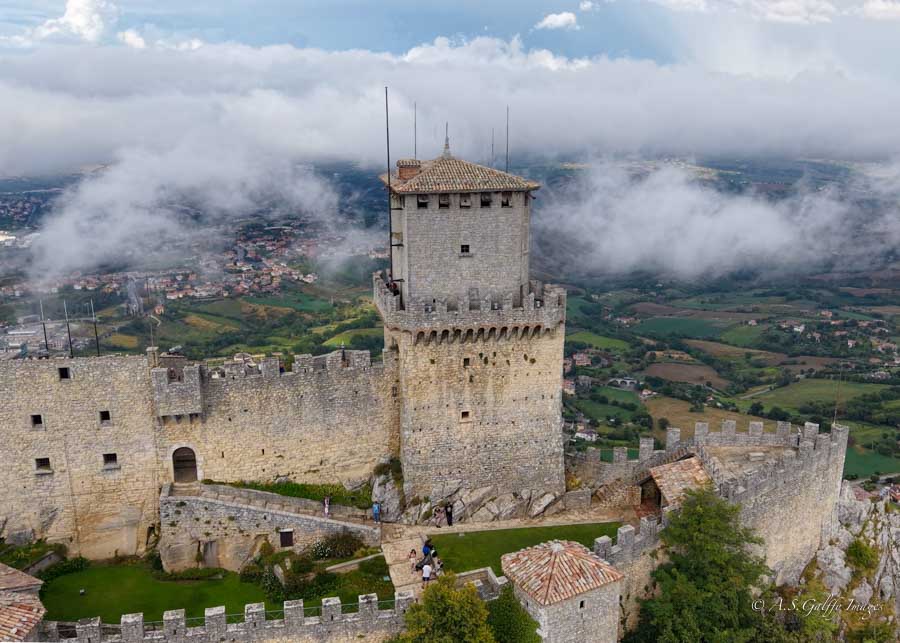 Guaita Tower seen from above
Guaita Tower seen from above
Guaita Tower
The oldest of the three towers Is Guaita (or Rocca) which is built directly on the stone of the mountain without any foundations. This tower dates back to the XI century and is among the oldest fortresses in Italy. There are two rings of walls where people were sheltering during sieges.
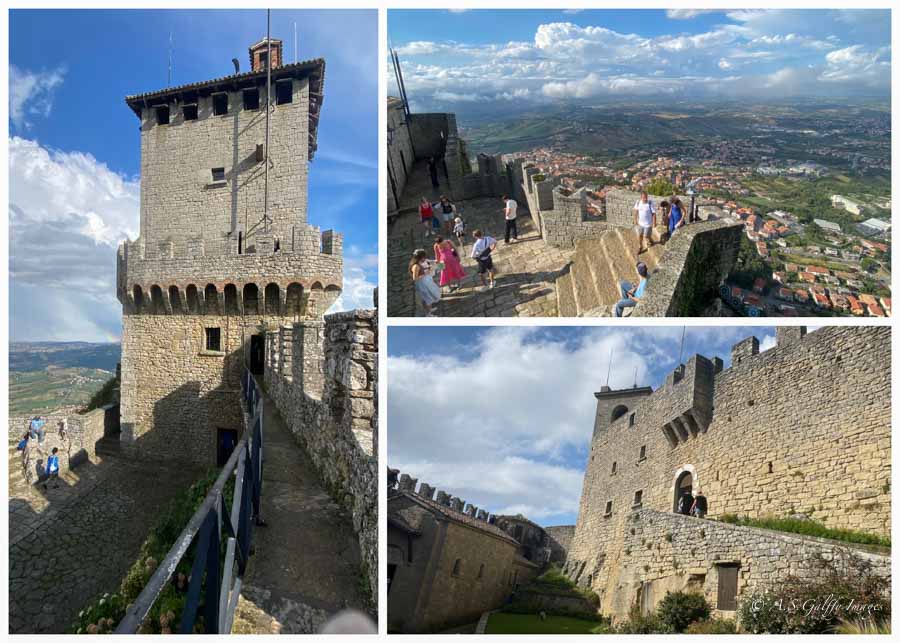 Images from inside the Guaita Tower
Images from inside the Guaita Tower
You can reach the tower by climbing a very narrow and steep staircase, but the effort is worth it. From the top you’ll get a beautiful view of the entire valley.
Cesta Tower
The second tower known as Cesta (or Fratta) sits a little farther away, on another peak of Mount Titan. This is the highest one, rising at 756 meters above sea level. Built at the end of the 11th century, the Second Tower was the seat of the guardhouse and also housed some prison cells.
 Cesta Tower seen from above
Cesta Tower seen from above 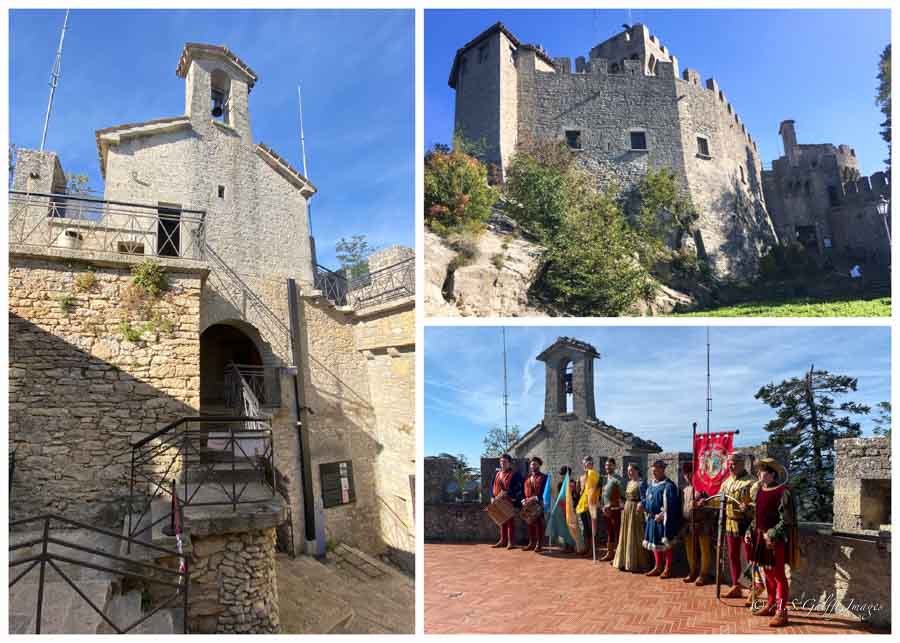 Inside Cesta Tower
Inside Cesta Tower
Today the tower houses the Museum of Ancient Arms, which includes firearms, bows, crossbows, and armor all dating from various periods between the Middle Ages and the end of the 19th century.
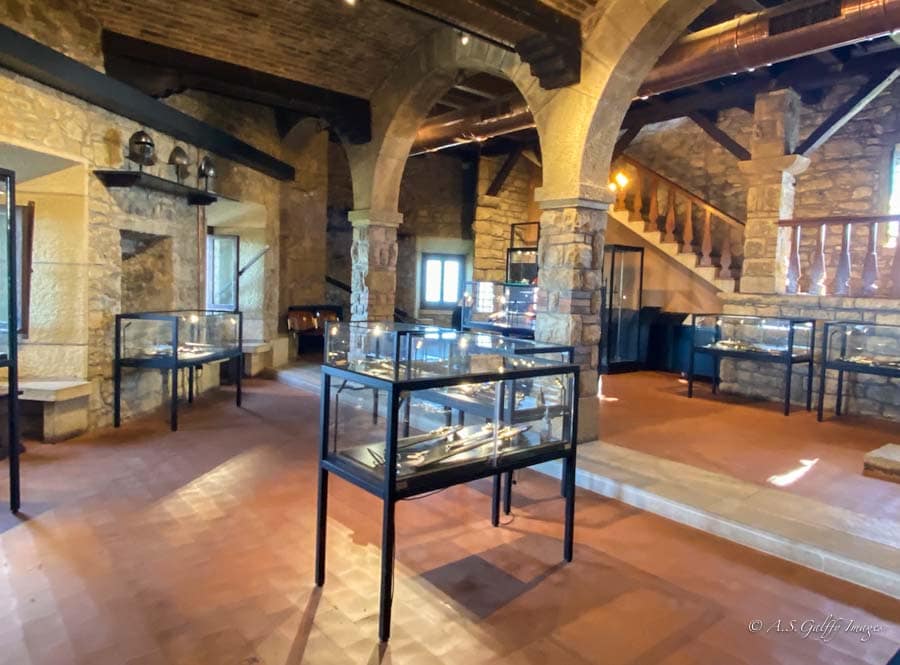 Museum of Ancient Arms, one of the best things to do in San Marino
Museum of Ancient Arms, one of the best things to do in San Marino
From the top you can look back toward the Guaita and see the third tower as well.
Montale Tower
The third tower called Montale is not open to the public because it is difficult to access. However, you can still walk all the way to it. The walk takes about 10 minutes from the second tower along a scenic path on the mountain ridge.
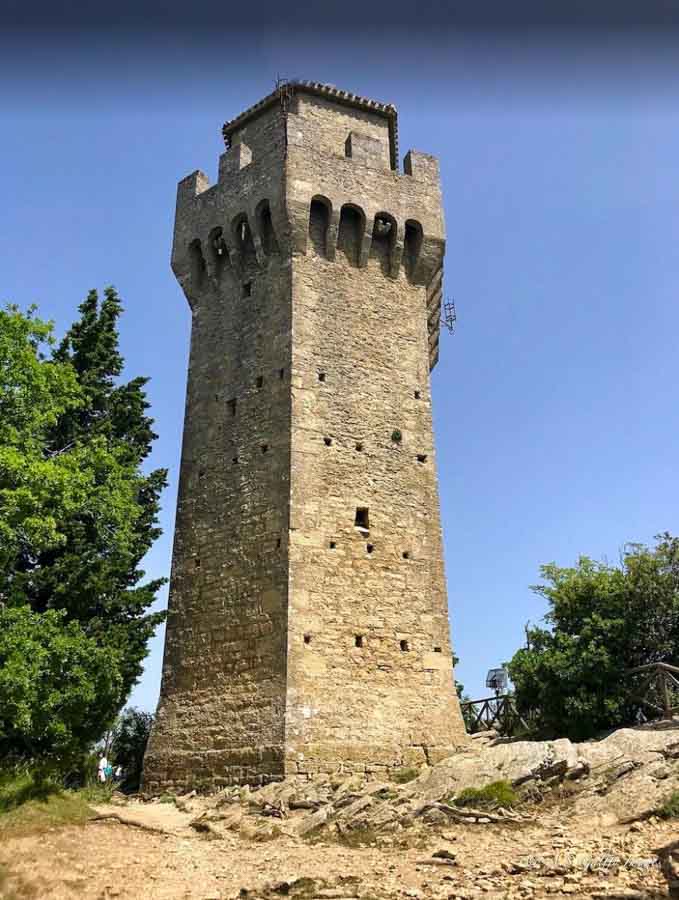 Montale Tower in San Marino
Montale Tower in San Marino
This tower dates back to the late 13th century and is the smallest in size. Nonetheless, it played a strategic role in the country’s defense because it sits in the best position for lookout. It also functioned as a prison during the 14th century.
Walk the Passo delle Steghe (Witches’ Path)
One of the nicest things to do in San Marino is walk along the Witches’ Path (Passo delle Steghe), which connects the first and the second tower. This shaded paved pass carved in stone on the ridge of Mount Titano has earned its name from a local legend. The story says that the path was a gathering place for witches to performe mysterious rituals around large fires.
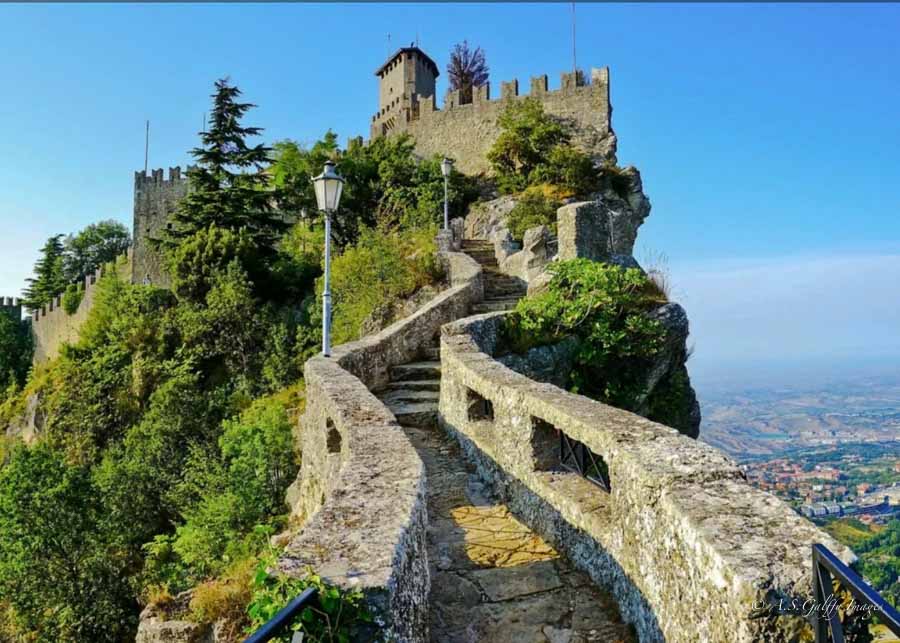 Passo delle Steghe (Witches’ Path) in San Marino
Passo delle Steghe (Witches’ Path) in San Marino
This is definitely one of the most photogenic spots in San Marino that offers stunning views of Castello della Cesta and the Adriatic Sea.
Visit Piazza della Liberta
Piazza della Liberta is the most popular public square in San Marino. This historic place serves as the center of government and a symbol of the Republic’s independence. Here you’ll find the Palazzo Pubblico – the government seat– and the Statue of Liberty, a marble sculpture that symbolizes the country’s freedom.
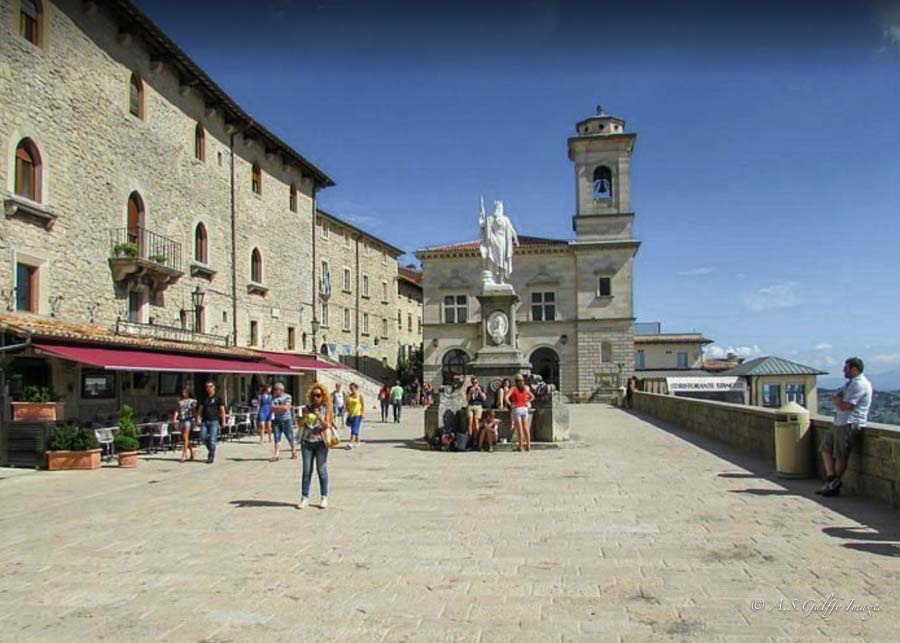 Piazza della Liberta
Piazza della Liberta
The piazza is a hub for local events and offers panoramic views of the surrounding area. There are a number of shops in the square and places to eat. You can even see the changing of the guard here.
Take a Tour of the Palazzo Pubblico
Palazzo Pubblico (the Public Palace) is actually the town hall of the City of San Marino as well as its official Government Building. This is the seat of the Republic’s main administrative bodies: the Captains Regent, the Grand and General Council and the Congress of State. Here is also where official State ceremonies take place.
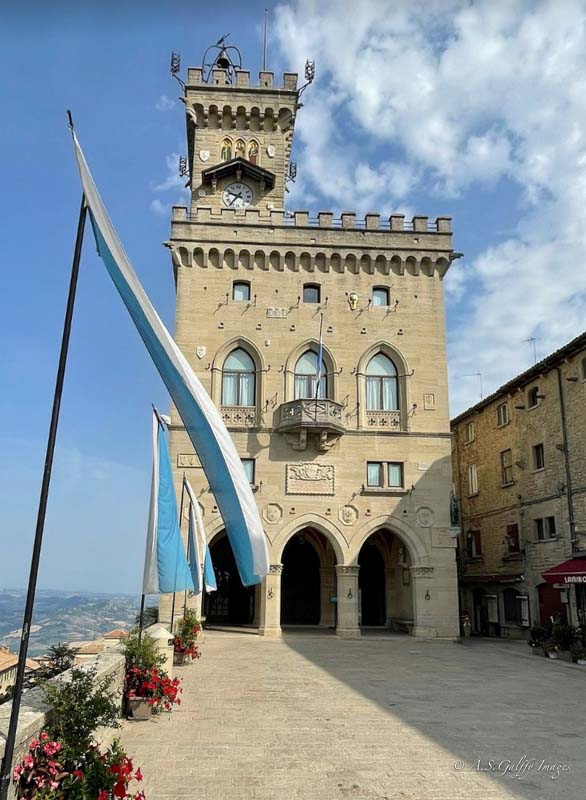 Palazzo Pubblico
Palazzo Pubblico
The palace is open to the public at specific times throughout the year, but it’s closed on certain holidays and during official ceremonies. To visit Palazzo Pubblico you’ll need to purchase a ticket, but if you buy San Marino Pass the entrance is included.
 Palazzo Pubblico
Palazzo Pubblico
Step Inside the Basilica of San Marino
The large cathedral in the center of the City of San Marino is the country’s main church and a significant landmark. Located in Piazza Domus Plebis, the cathedral is a site of deep spiritual significance as it houses the relics of Saint Marinus, the founder and patron saint of San Marino.
 Basilica of San Marino
Basilica of San Marino
The interior features three naves and two side aisles which create a spacious and traditional basilica layout. Besides the main altar adorned with a statue of the saint, there are also several marble altars, as well as beautiful paintings, stain glass and frescos.
 The main nave of Basilica di San Marino
The main nave of Basilica di San Marino
Wander the Streets of the Historic Center
Walking is the best way to experience the historic center of San Marino. Most of the Old Town is exclusively for pedestrians, allowing you to explore freely. You can wander the narrow alleyways and cobblestone streets, climb the staircases and check out the souvenir shops. Walking around is a great way to find unexpected viewpoints and interesting corners. And don’t worry about getting lost because this is a very compact area.
 Contrada de la Porta Nova
Contrada de la Porta Nova
Get a San Marino Stamp in Your Passport
One of the nicest things to do in San Marino is visit the San Marino Tourism Office and have them stamp your passport for you. While you don’t need a visa to get into San Marino, many tourists love having their passports stamped when visiting this tiny country.
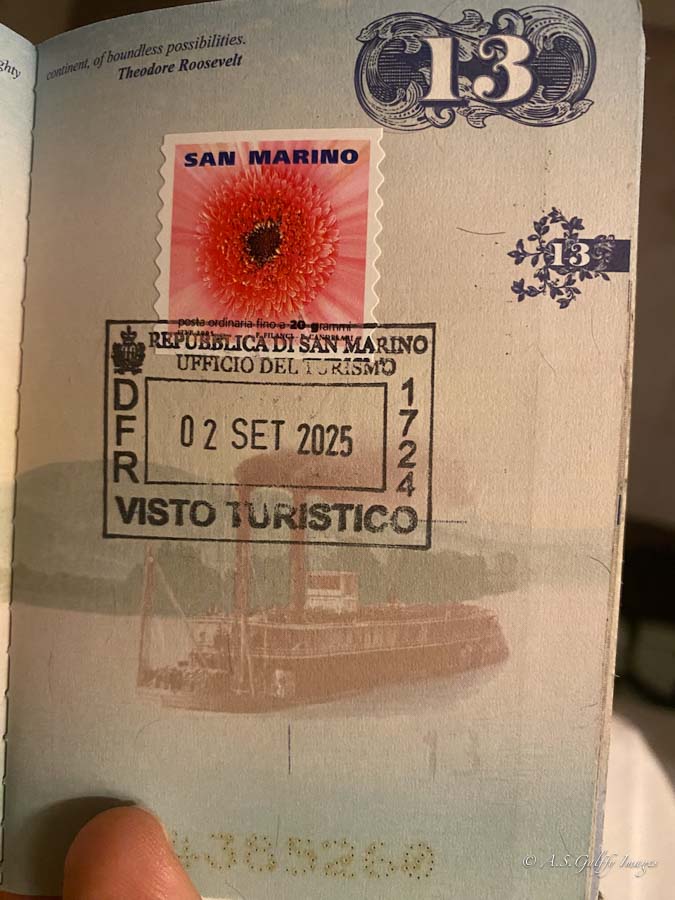
The stamps costs only €5 and that money goes towards promoting the tourism of San Marino.
How to Get to San Marino
San Marino is only accessible by bus or by car, as there is no train station or airport nearby. The closest city is Rimini, which is around 20 km away. In Rimini there is a bus connection which takes around 1 hour to San Marino and vice versa. There are frequent connections by a Bonelli Shuttle and Bus Benedettini every 1 hour and 30 minutes and costs €6. You can check the Bonelli Bus schedule here.
We came by car as we were on a bigger tour of Italy and didn’t have any issues reaching it. We could also find parking, which is generally a problem in Europe.
Parking in San Marino is available throughout the city and is relatively inexpensive. You may choose to leave your car down the hill in Borgo Maggiore and use the funicular (Funivia din San Marino) to reach the historic center. Or you can drive to it, if you don’t mind driving the uphill winding roads of Mount Titano. There are some parking places in the historic center, but they fill up very quickly during the summer months.
Other Interesting Things to Know Before Visiting San Marino
Culture and Traditions
While San Marino is heavily influenced by its Italian surroundings, it maintains a strong national identity and is very proud of its history. The country has a rich and unique culture, with distinct traditions. Such is the Feast of San Marino on September 3rd when the Sammarinese commemorate the founding of their republic. If you are lucky to be here for that feast, you’ll witness parades, concerts, military displays, and medieval reenactments.
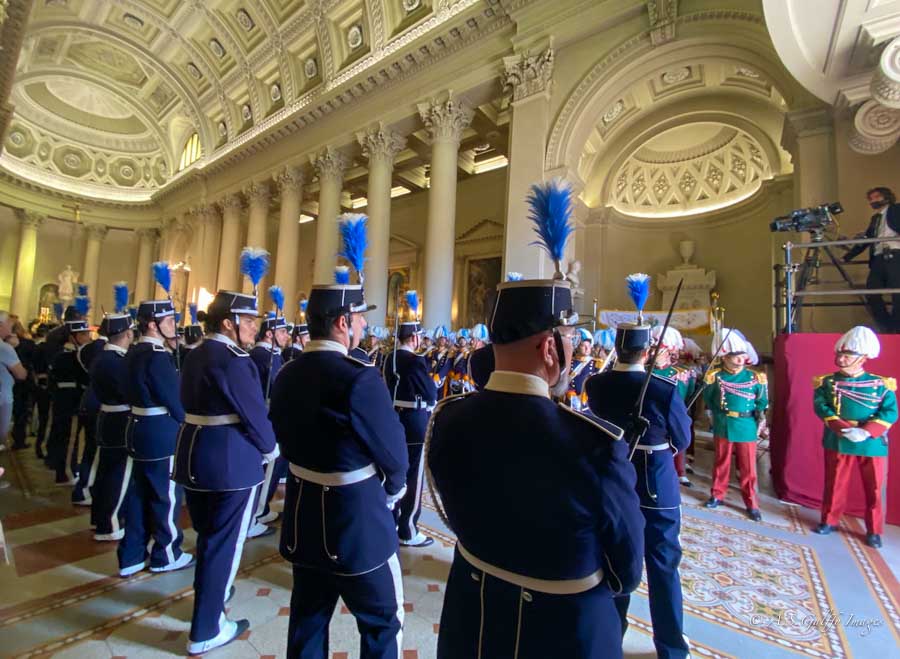 The Feast of San Marino Celebration
The Feast of San Marino Celebration
There is also the Anniversary of the Arengo on March 25th, when they commemorate the 1906 meeting that restored direct democratic elections and ended over three centuries of oligarchic rule by the Grand and General Council.
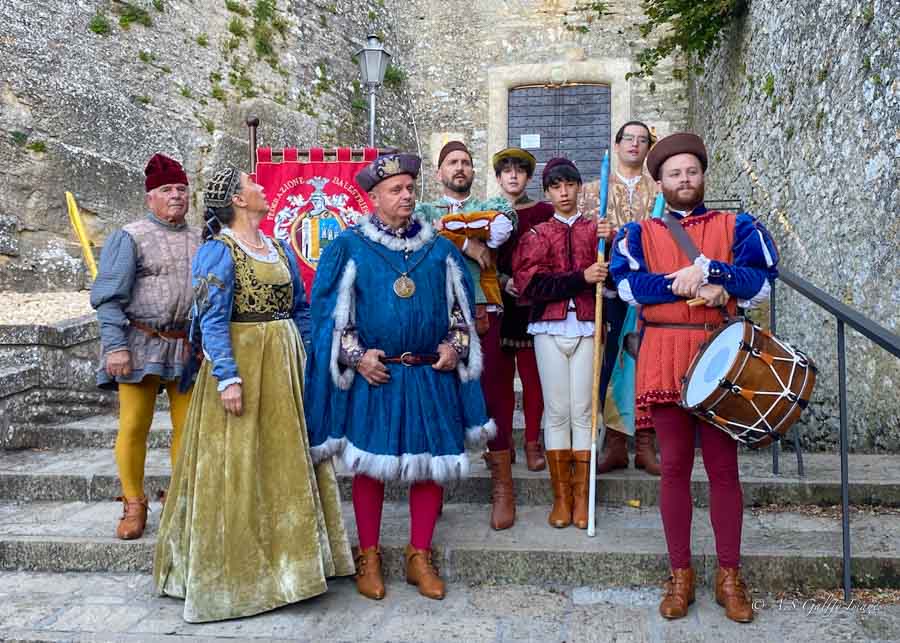 Medieval Days Festival
Medieval Days Festival
Other traditions include the Feast of Saint Agatha and Medieval Days (Jouat Medioeva) a festival that transforms the city into a medieval setting with armored guards and traditional costumes.
Language
Although the official language is Italian, the Sammarinese also use a dialect of Emiliano-Romagnolo which incorporates local phrases into their everyday conversation.
One interesting thing to notice is that although it uses Euro as its official currency, San Marino is not part of the European Union.
San Marino Government
The Republic of San Marino does not have a presidential system per se. Instead, it has two heads of state known as the Captains Regent. This system dates back to the 13th century.
 Captains Regent of San Marino
Captains Regent of San Marino
The two Captains Regent serve as heads of state and government for a six-month term. This tradition dating back to the 13th century ensures a balance of power. The two heads of state are typically elected from opposing parties. And not only that. San Marino has a long history of female leadership. Over the centuries, at least 20 women served as Captains Regent.
How to Explore San Marino
The historic center of San Marino is a very tiny place which can easily be explored on foot and without any guidance. Don’t be afraid of getting lost on its narrow alleyways because eventually you’ll end up where you started. There is no way to completely loose your way.
In terms of time necessary to visit San Marino, we only had one full day and a night and thought that was enough. That’s not to say that you would run out of things to do if you had more time, but if you only want to visit the main attractions, 1-2 days should be enough.
YOU MAY ALSO LIKE:
Източник за тази статия
Наши спонсори са:
Български трактори на добри цени при изключително качество






